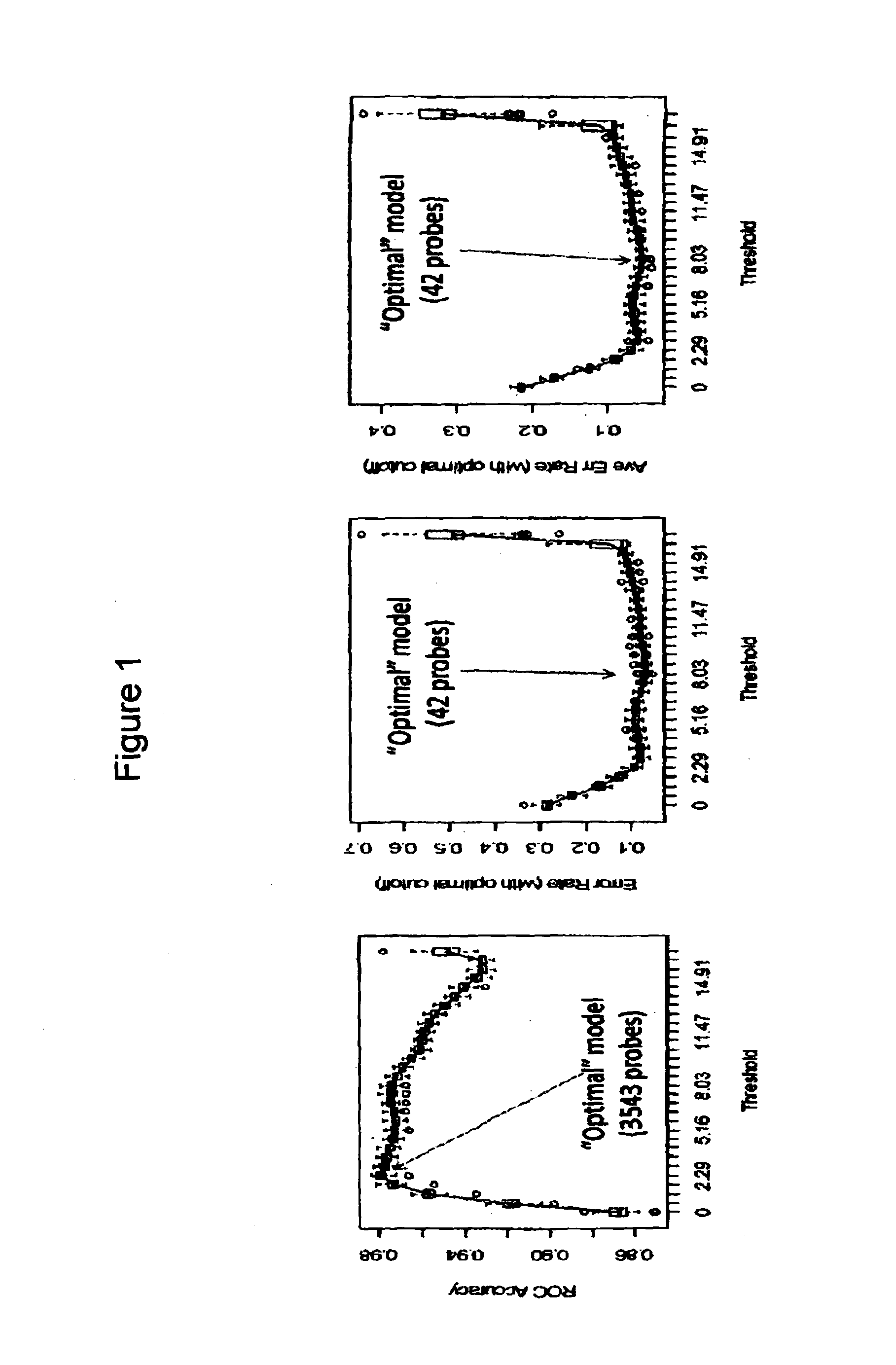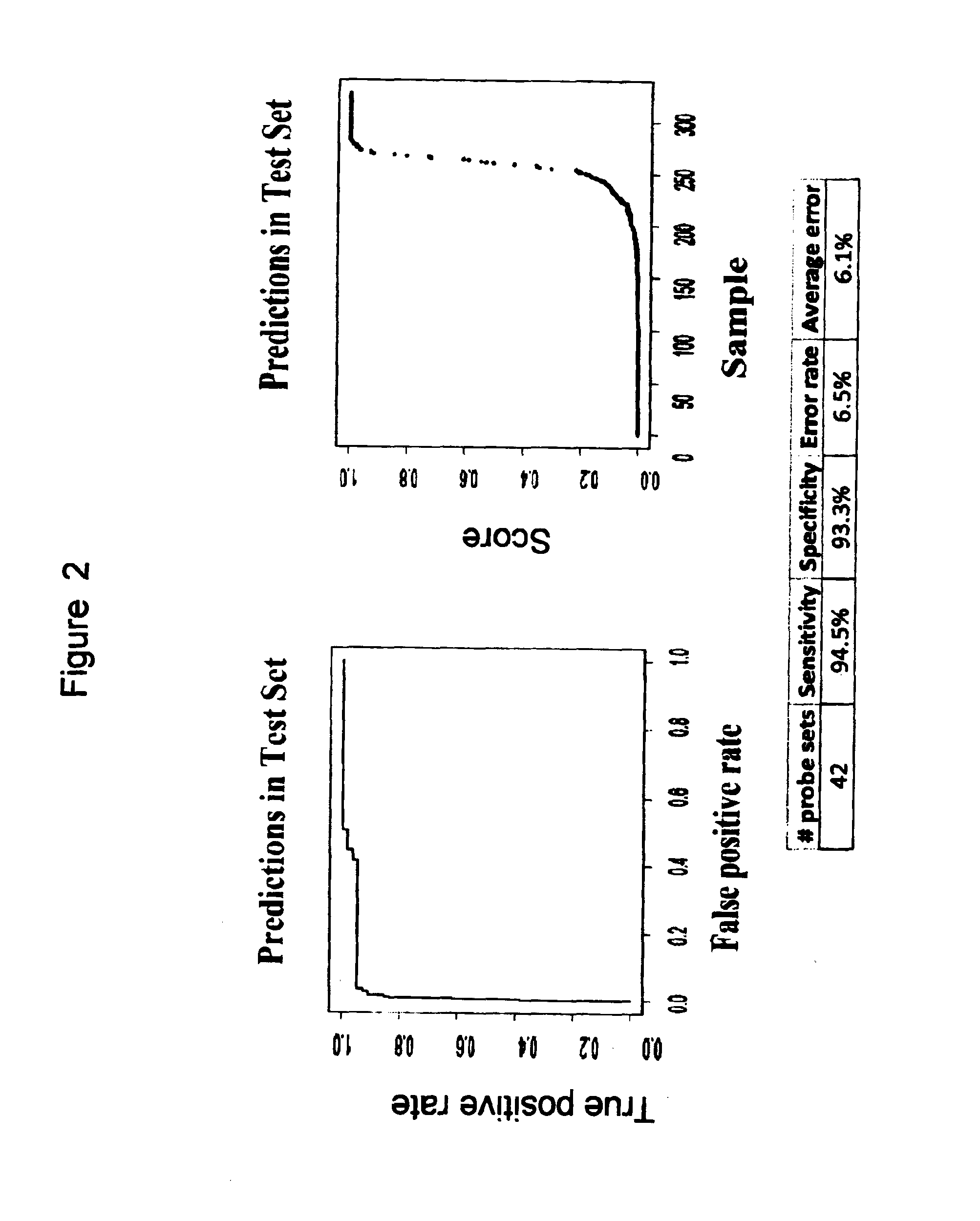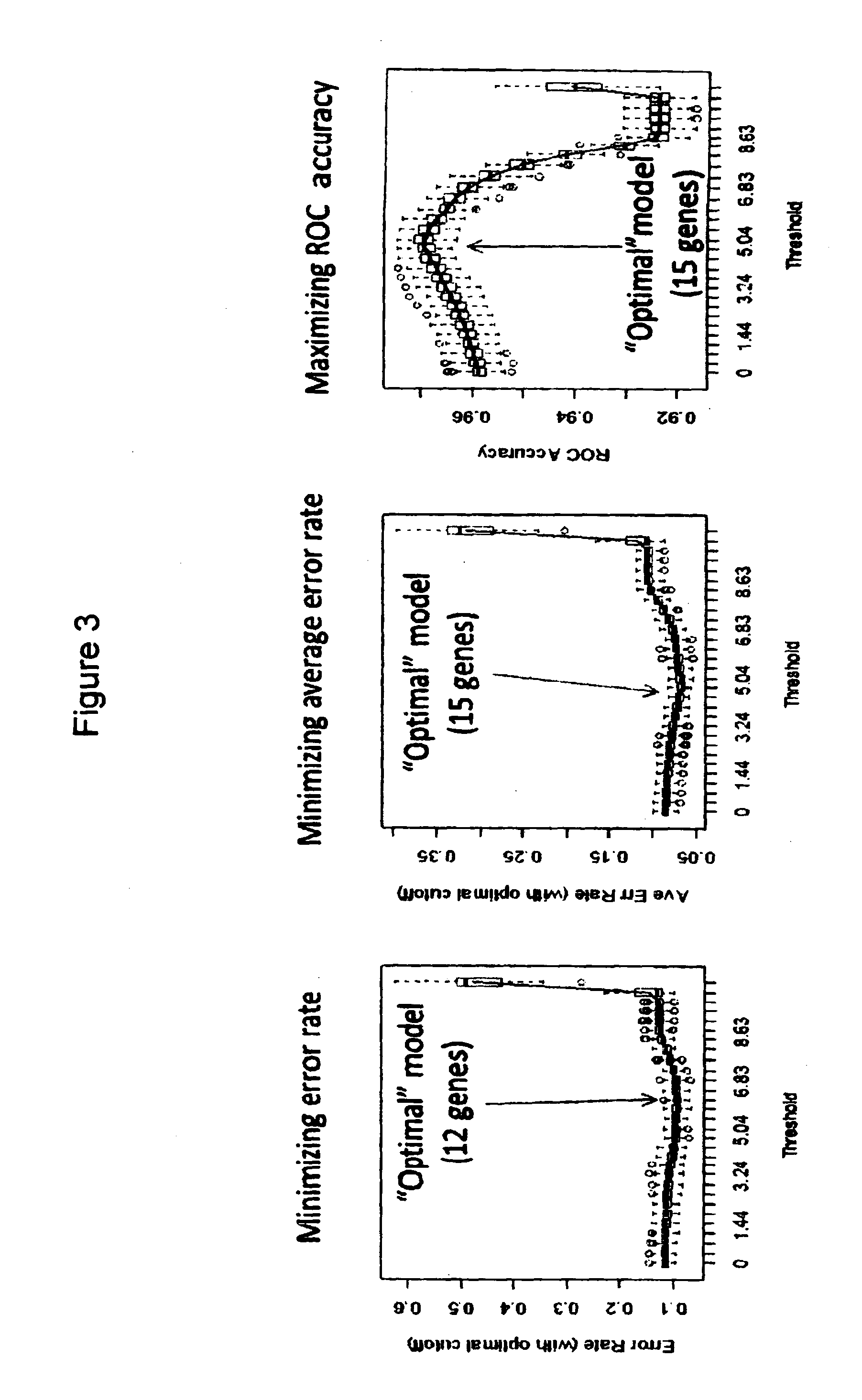Gene expression signatures for detection of underlying philadelphia chromosome-like (ph-like) events and therapeutic targeting in leukemia
a gene expression signature and philadelphia chromosome technology, applied in the field of gene expression signatures for detection of underlying philadelphia chromosomelike events and therapeutic targeting in leukemia, to achieve the effects of favorable prognosis, enhanced therapeutic outcome, and increased expression level
- Summary
- Abstract
- Description
- Claims
- Application Information
AI Technical Summary
Benefits of technology
Problems solved by technology
Method used
Image
Examples
example 1
Microarray Modeling
[0199]Patient material from 811 cases of pediatric high risk B precursor ALL, from patients derived from Children's Oncology Group (COG) clinical trials P9906 and AALL0232 was run on Affymetrix U133 Plus 2 arrays.1,6 RNA was isolated from the diagnostic samples of bone marrow or peripheral blood as previously described. Leukemic blast counts averaged >80% for all cases. The 811 cases were comprised of two cohorts from separate clinical trials: COG P9906 (n=207) and COG AALL0232 (n=604).1,6 The RNA was labeled, hybridized to the chips, washed and scanned as previously described. All 811 arrays were normalized together with the RMA algorithm and the default settings for 3′expression arrays using Affymetrix Expression Console. The simultaneous normalization of all cases was intended to reduce set effects and permit the direct comparison of gene intensities across the different cohorts.
[0200]RMA data from the best characterized cases (COG P9906 and the first 283 cases...
example 2
Quantitative PCR Modeling
[0206]In an effort to demonstrate that this same approach can be applied to a different platform, more amenable to the diagnostic clinical laboratory setting, the same methodologic approach and statistical design was used to develop a model based upon quantitative RT-PCR, rather than gene expression array data. The 42 probe set modeled from the gene expression profiling data (Table 2B) were derived from only 26 unique; as noted in Table 2B some genes were represented by multiple probe sets during the model building. Of these 26 genes, 23 were well characterized and transferrable for evaluation to a direct quantitative RT-PCR assay using the low-density array (LDA) platform of Life Technologies (Table 4). One microgram of RNA was converted to cDNA using random primers and then run using the ABI model 7900ht with default LDA settings outlined by the manufacturer. 478 of the original 486 cases (98.3%) had available material and passed the QC criteria for contro...
PUM
| Property | Measurement | Unit |
|---|---|---|
| pH | aaaaa | aaaaa |
| temperature | aaaaa | aaaaa |
| temperature | aaaaa | aaaaa |
Abstract
Description
Claims
Application Information
 Login to View More
Login to View More - R&D
- Intellectual Property
- Life Sciences
- Materials
- Tech Scout
- Unparalleled Data Quality
- Higher Quality Content
- 60% Fewer Hallucinations
Browse by: Latest US Patents, China's latest patents, Technical Efficacy Thesaurus, Application Domain, Technology Topic, Popular Technical Reports.
© 2025 PatSnap. All rights reserved.Legal|Privacy policy|Modern Slavery Act Transparency Statement|Sitemap|About US| Contact US: help@patsnap.com



